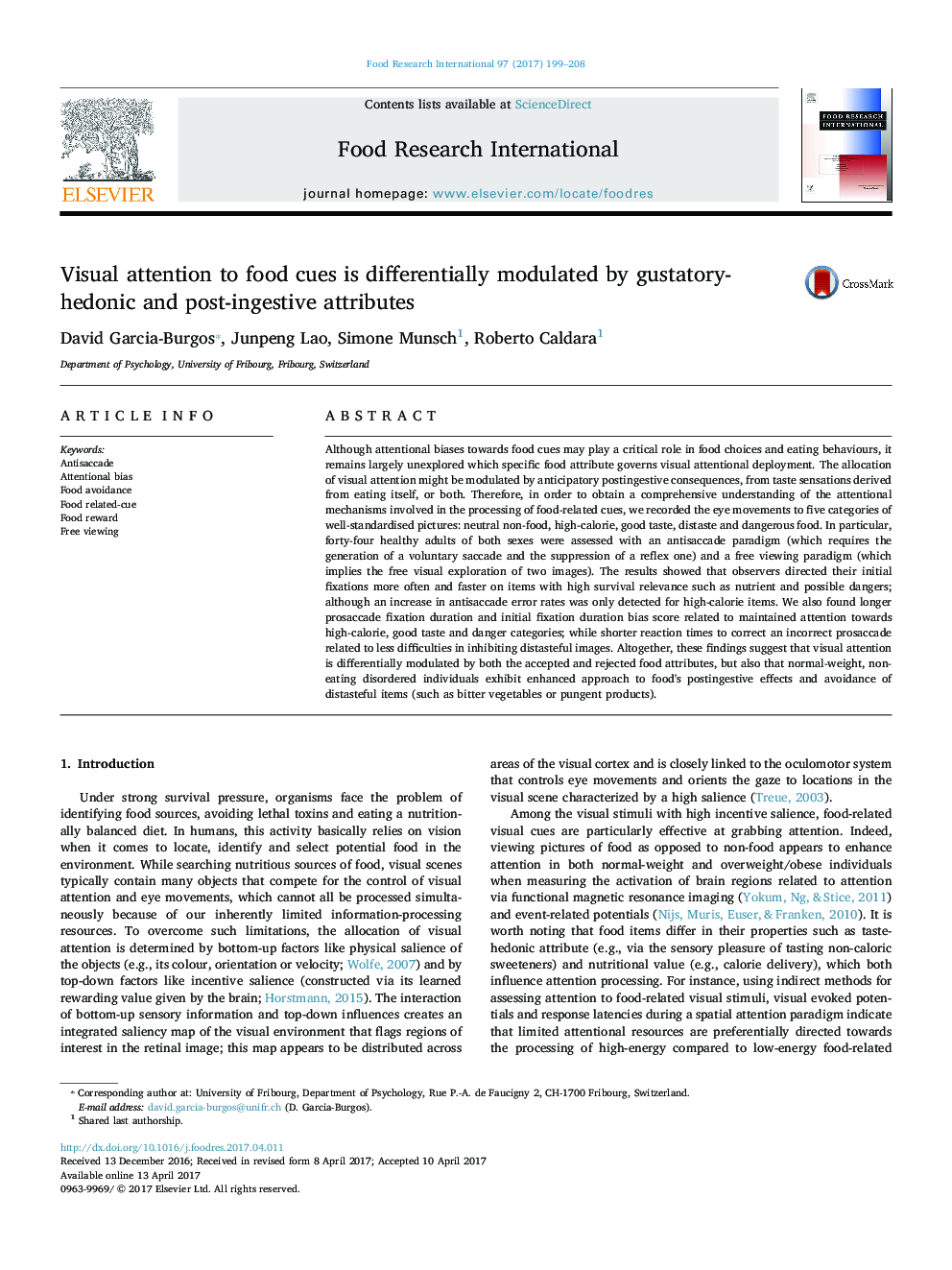| کد مقاله | کد نشریه | سال انتشار | مقاله انگلیسی | نسخه تمام متن |
|---|---|---|---|---|
| 5768224 | 1628453 | 2017 | 10 صفحه PDF | دانلود رایگان |
- Attention is differentially modulated by accepted and rejected food attributes.
- Healthy-weight, non-eating disordered subjects show food-related attention biases.
- Participants exhibit attention biases especially for palatable high-fat food.
- Visual attentional avoidance is observed to vegetable items.
Although attentional biases towards food cues may play a critical role in food choices and eating behaviours, it remains largely unexplored which specific food attribute governs visual attentional deployment. The allocation of visual attention might be modulated by anticipatory postingestive consequences, from taste sensations derived from eating itself, or both. Therefore, in order to obtain a comprehensive understanding of the attentional mechanisms involved in the processing of food-related cues, we recorded the eye movements to five categories of well-standardised pictures: neutral non-food, high-calorie, good taste, distaste and dangerous food. In particular, forty-four healthy adults of both sexes were assessed with an antisaccade paradigm (which requires the generation of a voluntary saccade and the suppression of a reflex one) and a free viewing paradigm (which implies the free visual exploration of two images). The results showed that observers directed their initial fixations more often and faster on items with high survival relevance such as nutrient and possible dangers; although an increase in antisaccade error rates was only detected for high-calorie items. We also found longer prosaccade fixation duration and initial fixation duration bias score related to maintained attention towards high-calorie, good taste and danger categories; while shorter reaction times to correct an incorrect prosaccade related to less difficulties in inhibiting distasteful images. Altogether, these findings suggest that visual attention is differentially modulated by both the accepted and rejected food attributes, but also that normal-weight, non-eating disordered individuals exhibit enhanced approach to food's postingestive effects and avoidance of distasteful items (such as bitter vegetables or pungent products).
64
Journal: Food Research International - Volume 97, July 2017, Pages 199-208
